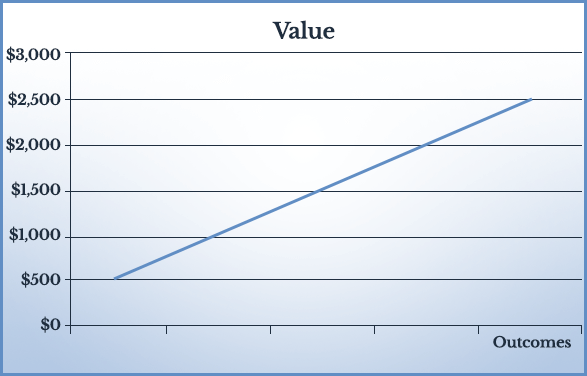Value in Healthcare
Overview: As the delivery, management and payment of healthcare shifts from a volume based structure to one that is based on the value of services provided, it is important to understand what value is in healthcare.
Definition: Value in healthcare has been defined as “outcomes achieved per dollar spent”. This definition provides an easy to understand framework. It implies an economic and outcomes trade-off that, while easy to understand, is difficult to balance.
Explanation: The concept of value is multi-dimensional. Value is determined based upon the particular situation considered. A common understanding of the success of healthcare is that appropriate care is provided, at the appropriate place, at the appropriate time. Value of care is a function of these elements, and is dependent on a number of factors.
Value is determined from a number of perspectives.
System Wide: Given the unique circumstances of the individual, of a spectrum of services, over a period of time. This addresses the overall health of the individual.
Payor: This element addresses the relationship that the individual has with the payor of their healthcare services.
Condition(s): An individual may have multiple conditions. The person may be satisfied with the value received for the treatment of certain conditions, but not others, or not all conditions.
Provider: An individual may be treated by a provider for multiple conditions (primary care physcian) or by a single provider for a specific condition. The individual may feel that value was received from one provider, but not all providers.
Location: Care may be received in a number of locations. Value is determined by the experience the patient has in each facility in which they receive care. In this situation, value drivers may include convenience, ease of access, responsiveness of support personnel, cleanliness.
Episode: Value is also identified on a case by case basis. Example: I like my provider, but when I went to them for an emergency, I did not feel they were responsive to my needs.
Cost/Outcome trade off: A fundamental assumption of the trade-off is outcomes are dependent on the amount of money spent. If you want greater outcomes, cost will increase. In New York State, the improvement of outcomes for Medicaid beneficiaries has lagged behind increases in dollars spent. New York State’s Medicaid redesign efforts are focused on bending the healthcare delivery cost curve to improve outcomes and reduce cost.
This concept can be portrayed graphically:

| • Improving outcomes with the same level of spending – the curve shifts to the right. |
| or |
| • Providing the same level of outcomes with reduced spending – the curve shifts down. |

